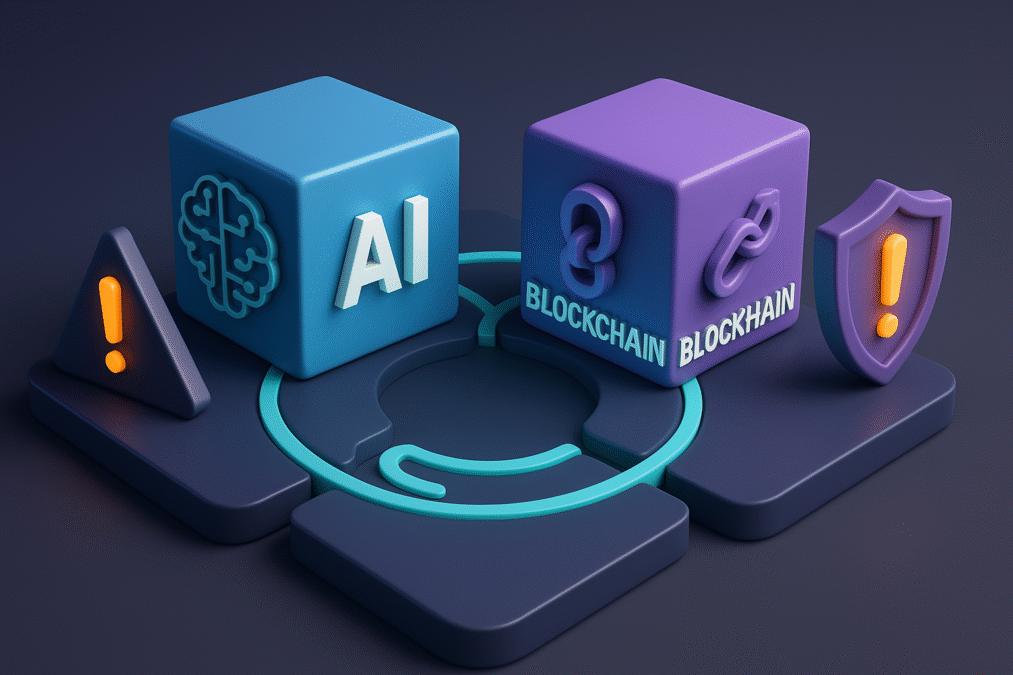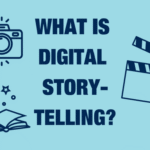🌍 Introduction
The world stands at the crossroads of two powerful technologies: Artificial Intelligence (AI) and Blockchain. Individually, they’ve reshaped industries — but together, they’re revolutionizing the digital landscape in ways the world has never seen before.
The year 2025 marks a turning point. From secure data sharing to automated contracts, AI and Blockchain integration is enabling smarter, faster, and more transparent systems. Businesses, governments, and individuals are leveraging this duo to redefine trust, efficiency, and innovation.
Let’s explore how this groundbreaking partnership is shaping the next era of technology and what it means for our world.
⚙️ Understanding the Power Duo
Before diving into their integration, it’s essential to understand both technologies individually:
🧠 Artificial Intelligence (AI)
AI is the science of creating machines that can think, learn, and make decisions like humans. It powers chatbots, self-driving cars, smart assistants, and data analytics tools.
Key abilities include:
- Machine learning (learning from data)
- Natural language processing (understanding human language)
- Predictive analytics (forecasting trends)
- Computer vision (recognizing visuals and objects)
🔗 Blockchain
Blockchain is a decentralized digital ledger that records data securely and transparently. Once data is entered, it can’t be altered — ensuring authenticity and trust.
It’s the backbone of cryptocurrencies, but its applications go far beyond finance: from healthcare data to supply chain records, Blockchain is revolutionizing how information is stored and verified.
💡 Why Combine AI and Blockchain?

AI thrives on data — it learns, improves, and evolves using large datasets.
Blockchain provides secure, transparent, and tamper-proof data storage.
By merging them, we create systems that are both intelligent and trustworthy.
Here’s what makes the integration so powerful:
- AI needs reliable data → Blockchain guarantees it.
- Blockchain needs automation → AI provides it.
- Together → They build self-learning, self-secure ecosystems.
That’s why AI and Blockchain integration is often called the “Innovation Duo of the Decade.”
🔍 The Synergy: How AI and Blockchain Work Together
1. Enhanced Security and Trust
Blockchain ensures data can’t be changed once recorded. When AI algorithms use this verified data, decisions become more accurate and bias-free.
Example: In financial fraud detection, AI analyzes Blockchain-verified transactions, ensuring 100% trustworthy insights.
2. Decentralized Intelligence
Traditional AI systems are centralized — meaning one server controls the data. With Blockchain, AI models can be decentralized, reducing manipulation and data theft risks.
Example: In healthcare, patient data can be analyzed by AI while still being encrypted and controlled by the patient on a Blockchain network.
3. Smarter Smart Contracts
Smart contracts execute automatically when conditions are met. Integrating AI allows them to make dynamic decisions based on data — not just predefined rules.
Example: In insurance, an AI-driven smart contract could automatically adjust premiums or payouts based on real-time health data.
4. Transparent Decision-Making
AI decisions can sometimes seem like “black boxes.” Blockchain adds transparency by logging every step, making it easy to audit and understand how AI reached a decision.
🏭 Real-World Applications in 2025
The combined force of AI and Blockchain is no longer theoretical — it’s driving real transformation across industries:
🔹 1. Finance & Banking
- AI analyzes transaction data to detect fraud or predict market trends.
- Blockchain secures digital payments, peer-to-peer lending, and DeFi operations.
- Together, they enable faster, safer, and smarter financial systems.
Example: AI algorithms on blockchain-based DeFi platforms identify suspicious wallet activities in real-time — preventing scams before they occur.
🔹 2. Healthcare
- Blockchain stores patient records safely.
- AI analyzes data to detect diseases or recommend treatments.
- Patients maintain ownership of their data while doctors access verified records securely.
Example: Hospitals using AI and Blockchain integration predict epidemics using shared but encrypted patient data.
🔹 3. Supply Chain Management
- Blockchain tracks every product’s journey from manufacturer to consumer.
- AI predicts supply chain disruptions or optimizes delivery routes.
Example: In 2025, global logistics companies use AI-powered Blockchain systems to reduce delays, verify authenticity, and cut costs.
🔹 4. Cybersecurity
Cyberattacks are growing smarter — so must our defense systems.
AI identifies unusual patterns, while Blockchain protects data integrity.
Example: Security platforms like AI Shield and DeepTrust use both technologies to detect, log, and block attacks in milliseconds.
🔹 5. Education
Blockchain verifies certificates and qualifications, while AI customizes learning paths for students.
Together, they create smart education systems where performance and credibility are transparent and tamper-proof.
Example: Universities issue blockchain-based digital diplomas, while AI tutors provide adaptive study plans.
🔹 6. Smart Cities
Smart cities use sensors and AI to manage traffic, electricity, and water.
Blockchain ensures data from these sensors remains authentic and secure.
Example: In 2025, Dubai and Singapore are deploying AI + Blockchain smart infrastructure to reduce waste and optimize public services.
🔹 7. Government & Public Administration
- AI automates document verification and citizen services.
- Blockchain ensures government data remains public, traceable, and tamper-proof.
Example: Estonia already uses Blockchain-based e-governance, and integrating AI will make digital governance fully autonomous by 2025.
💬 Benefits of AI and Blockchain Integration
| Benefit | Description |
|---|---|
| Data Security | Blockchain prevents data tampering, making AI predictions more reliable. |
| Automation | AI automates blockchain smart contracts and system operations. |
| Transparency | Every AI decision and blockchain record is traceable. |
| Efficiency | Together, they eliminate intermediaries and speed up processes. |
| Cost Reduction | Automated systems reduce manpower and human error costs. |
| Global Trust | Decentralized systems build transparency between companies and users. |
⚠️ Challenges in AI + Blockchain Integration
Despite the potential, there are some roadblocks:
1. Scalability Issues
Blockchain networks can be slow, while AI needs high-speed data processing. Balancing both requires innovation in computing power.
2. Energy Consumption
Both technologies are resource-intensive. Sustainable development is essential for large-scale use.
3. Data Privacy vs. Transparency
AI needs data for learning, but Blockchain’s transparency can expose sensitive information if not encrypted properly.
4. Regulatory Barriers
Governments are still defining policies around data usage, AI ethics, and digital currencies.
5. Integration Complexity
Combining AI and Blockchain requires advanced technical expertise and infrastructure investment.
🚀 The Future Outlook: 2025 and Beyond
By 2025, experts predict the AI and Blockchain integration market will surpass $1 trillion, as industries adopt decentralized intelligence.
Emerging trends include:
- AI-Powered DAOs (Decentralized Autonomous Organizations): Companies managed by AI using Blockchain rules.
- Tokenized Data Economy: People will sell their data securely through Blockchain while AI systems use it for analysis.
- AI Identity Verification: Secure, blockchain-backed biometric identity systems for global digital access.
- Predictive Governance: Governments will use AI + Blockchain data to predict economic or environmental issues before they happen.
In short, this duo is driving us toward a trust-based, data-driven world.
AI + Blockchain Integration in Pakistan & Developing Countries
Emerging nations are not behind in this revolution. In countries like Pakistan, India, and the UAE, startups are exploring:
- AI-based agricultural predictions using blockchain-verified data.
- Transparent charity and donation systems.
- Smart city monitoring and energy efficiency.
This integration empowers youth-led innovation, promoting digital independence and sustainable economic growth.
❓Short FAQs
Q1: What is AI and Blockchain integration?
A: It’s the combination of artificial intelligence and blockchain to build intelligent, secure, and decentralized systems for industries.
Q2: How is AI improving blockchain?
A: AI helps analyze data stored on blockchain networks, automate smart contracts, and detect fraud or anomalies.
Q3: Can Blockchain make AI more secure?
A: Yes. Blockchain ensures the data AI uses is verified, preventing manipulation or bias.
Q4: What industries benefit the most from this integration?
A: Finance, healthcare, supply chain, cybersecurity, and smart governance are leading adopters.
Q5: Is AI + Blockchain the future?
A: Absolutely. By 2025 and beyond, their combined power will define the foundation of global innovation and digital trust.
🧭 Conclusion
The partnership between AI and Blockchain isn’t just a trend — it’s a transformation. Together, they’re shaping how the world works, trades, learns, and lives.
In 2025, industries will no longer ask whether to use AI or Blockchain — they’ll ask how to merge them for maximum impact.
This Innovation Duo symbolizes the perfect balance between intelligence and integrity, creativity and credibility, automation and accountability.
The future belongs to those who understand how to connect both — because the next digital revolution has already begun.



